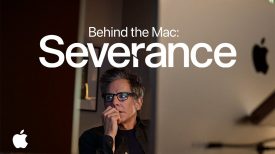By contributor Jonah Kessel and edited by site editor Dan Chung:

The World Press Photo multimedia competition is now a few years old. It seeks to recognise photojournalists and multimedia professionals for excellence in this field. The criteria used to judge these awards have been controversial and their definition of multimedia for the purposes of this contest has varied. After visiting their headquarters, our contributor Jonah Kessel decided to send them this open letter:
To Micha Bruinvels:
Contest coordinator at World Press Photo
Thank you for inviting me to visit World Press Photo in Amsterdam last week. It was a true pleasure to meet you and your colleagues as well as to see and learn about all of the work being done to promote and improve visual journalism around the world by WPP.
It was also very insightful to be able to talk to you about WPP’s young multimedia contest and the challenges that occur in trying to create categories that are applicable to a constantly changing media environment across the globe.
Every year, following contest season there seems to be quite a lot of debate about who wins what as well as what categories and merits multimedia journalists are judged in. While debate and discussion are healthy, there has been some criticism of the contest categories of WPP’s multimedia site, including on this site here and here.
Leaving the office of World Press Photo with a greater understanding of some of the challenges involved in creating contests like this, I started to ask myself: How would I create a contest that would best judge the work being done in multimedia journalism on a global scale? Well, here’s how.
First, I would outline some divisions and factors that shape video production quality and issues that could occur in judging them.
- CONTENT
Examples: Feature, Sports, Politics, Election, Breaking News, Feature
Can we judge a sports video against a politics video? - TYPE
Examples: Character Profile, Calendar Video Journalism, Breaking News, Issue
Should a single source character profile be judged against an issues based piece? - MEDIUM AND TEAM MEMBERS vs SOLO
Example: TV, Newspaper, Web
Newspapers and televisions are very different in terms of production style. Is it fair to judge the work of a solo newspaper video journalist next to a television journalist with a team of five? - LENGTH
Example: Under 5 minutes, Over 5 minutes
How does length play into judging videos? Can a 2 minute video be judged against a 5 minute video? - PRODUCTION TIMELINE
Example: One team spends one day shooting, another team spends a month.
Should someone who shot something in one day be in the same category as someone who spent a month on their production? - BUDGET
Example: $5000 vs $500
If one team has $5000 and one team only has $500, is the bigger budget team at an inherent advantage? - AUDIENCE REACH
Example: Newspaper with 25,000 unique monthly hits, vs network with 5 million nightly viewers
With photo contests, we often separate larger publications to smaller publications because the journalists have different resources at their hands.
Having too many categories is not a real option, because you might not have enough excellent entries in every category — and there’s certainly no use in awarding things that aren’t excellent. If we took the above list for example, you’d have around 20 categories.
So based on the above factors and this consideration, I’ve compressed my contest to six categories that I believe would (1) better reflect the current media environment from a production stand point, (2) help to recognize a variety of visual journalists from different areas in the media and (3) still allow the simple and inherent qualities of powerful multimedia to speak for itself, regardless of how it was created or what it is about. In my contest, awards would be given for:
- 1) TELEVISION VIDEO JOURNALIST OF THE YEAR
Awarded to a staff member of a television station. Three videos must be submitted. - 2) WEB AND NEWSPAPER VIDEO JOURNALIST OF THE YEAR
Awarded to any staff member of a newspaper or web site who makes video or multimedia to be used solely online. Three videos must be submitted. - 3) FREELANCE VIDEO JOURNALIST OF THE YEAR
Awarded to any video or multimedia journalist who does not have a staff position. Super stringers or accredited journalists working for multiple publications should apply here. Three videos must be submitted. - 4) SHORT
Defined as: Under 3 minutes or 1 day production
This category awards excellence in short form reporting that happens on the fly. Breaking news, nonplanned events and daily assignments. If the production was shot and edited in the same 24-hour period, regardless of length, you may enter in this category. - 5) FEATURE
Defined as: Between 3 and 10 minutes.
This category was designed to recognize excellence in short form, in-depth reporting for video and multimedia journalism. Pieces in this category could have been reported out over a long period of time, but the final product is still short form. - 6) DOCUMENTARY OR SERIES
Defined as: Any video over 10 minutes in length or three or more videos on a single topic.
This category is designed to recognize visual journalists in long-term, in-depth reporting.
A division like this would allow the best content to be judged for what impact it has while simultaneously evening our the playing field for visual journalists by allowing them to compete with those who have similar production conditions.
Categories 1 through 3 are designed to allow for factors of budgets, team size and organizational support. A freelancer might have more time to do work on a production while a staff member might have more support from their organization or more team members. Budget terms might follow the same theory. Bigger publications likely have bigger budgets. So smaller budget productions could still compete against each other without being leveled by a Goliath.
But categories 4 through 6 are designed to award video and multimedia based on its intrinsic quality and impact, no matter how they were made. I left content variation out of this list because I believe any type of content can be powerful. A good video is a good video — and the audience knows it when they see it. To help judge videos across a variety of topics a point system from judges would be applied that take into consideration factors like: (1) overall production value, (2) audio quality, (3) video quality, (4) story and narrative arch (5) editing/post production (6) news value (7) creativity (8) photojournalism. Factor 3 in this list refers to technical video quality while factor 8 refers to actual cinematography.
While we all make different types of videos, the time constraints from categories 4 through 6 would help group together things of a similar type or nature since certain genre of news multimedia tend to follow similar timelines of what’s acceptable to audiences, given their content.
These are my thoughts based upon the variety of work I am asked to do by employers as well as the work I see professionals doing on a day-to-day basis in the field. I’m sure there are still some holes in my theory, and if anyone reading this sees some, I would encourage you to list your ideas in the comment section below: How do you think multimedia and video journalism should be judged?
I do wonder however, if such a contest (like mine) were to exist, if the same post-contest moaning would still occur? Perhaps it is inevitable and this is the nature of Internet commenting. That is unclear.
But what is clear is that World Press Photo has a history of excellence and has helped award those who have dedicated their lives to photojournalism for decades. More recently, video and multimedia have had a growing importance in helping our world better understand the issues which shape the globe. However, annual contests don’t seem to be giving multimedia the same attention that audiences have been. As the role of video and multimedia grows, I hope World Press Photo can be a leader in helping to recognize the journalists at the forefront of this important transformation in visual journalism.
Looking forward to seeing what you guys came up with this year.
Best,
Jonah
– Jonah M. Kessel is a Pulitzer Prize-winning visual journalist and cinematographer based in Beijing, China. He covers China for the video desk of the York Times’ and makes videos and photos for newspapers, magazines, multinationals, nonprofit and governmental organizations around the globe. He always wants to know whats on the other side of the mountain, regardless of what side he’s on. See his site here or keep up with him on Twitter here.






